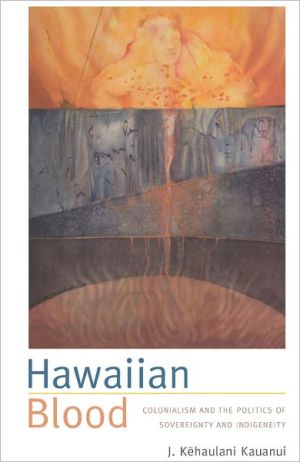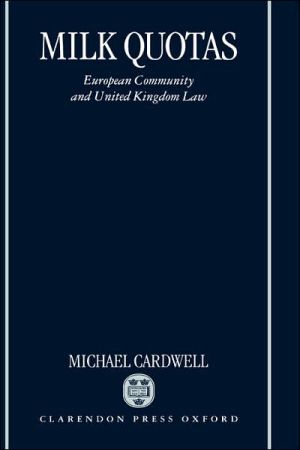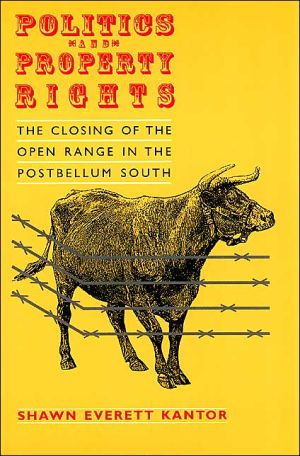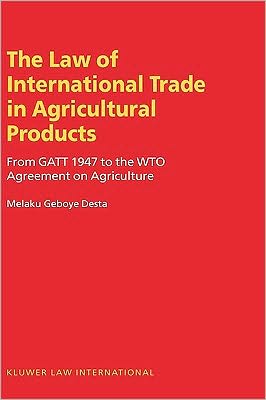Hawaiian Blood: Colonialism and the Politics of Sovereignty and Indigeneity
In the Hawaiian Homes Commission Act (HHCA) of 1921, the U.S. Congress defined “native Hawaiians” as those people “with at least one-half blood quantum of individuals inhabiting the Hawaiian Islands prior to 1778.” This “blood logic” has since become an entrenched part of the legal system in Hawai‘i. Hawaiian Blood is the first comprehensive history and analysis of this federal law that equates Hawaiian cultural identity with a quantifiable amount of blood. J. Kēhaulani Kauanui explains how...
Search in google:
Study of the legal and cultural effects of the "fifty-percent blood quantum" rule which was first instituted in the 1920s to define who counted as a native Hawaiian and which has continuing influence on legislation and on the Hawaiian sovereignt
Hawaiian Blood\ Colonialism and the Politics of Sovereignty and Indigeneity \ \ By J. Kehaulani Kauanui \ DUKE UNIVERSITY PRESS\ Copyright © 2008 Duke University Press\ All right reserved.\ ISBN: 978-0-8223-4079-9 \ \ \ Chapter One\ Racialized Beneficiaries and Genealogical Descendants \ AT A GATHERING AT 'IOLANI PALACE in 1998 to promote the restoration of Hawaiian sovereign self-governance for the hundred-year anniversary of the U.S. annexation, a high-profile Hawaiian woman with blond hair and blue eyes talked with two other Hawaiians, both darker than she. From afar, a white woman who was visiting from California noted how the two darker-skinned Hawaiians seemed to defer to the blond and suggested that it was internalized racism on their part. "They seem to be paying her special attention because she's white," she said. Her friend, who is Kanaka Maoli, also watching the incident from a distance, explained that they were paying respectful attention to the fact that the blond is of higher-ranking lineage than either one of them; they deferred to her because of her Hawaiianness, not her whiteness.\ An examination of Hawaiian genealogy and kinship practices has the potential to open up meaningful ways of engaging indigenous concepts of identity. Many Kanaka Maoli typically refer to both their lineage and kinship system as "genealogy" and use the term interchangeably with the Hawaiian term mo'oku'auhau. One of the many meanings of mo'o is a succession or series, while ku'auhau is defined as pedigree, lineage, old traditions, genealogies, historian, and to recite genealogy. Mo'o can mean lineage as well as succession, while ku'auhau can be used to describe one who is skilled in genealogy and traditional history (Handy and Pukui 1972: 197). Mo'o is also the word for lizard and lizard-like supernatural beings. The imagery of the mo'o lizard with visible vertebrae and kua mo'o (vertebrae backbone, or to link something together) "is apt and obvious as a simile for sequence of descendants in contiguous unbroken articulation," where one traces his or her genealogy in steps, just as one can follow the vertebrae of the spine (Handy and Pukui 1972: 197; Kaeppler 1982: 85). It is interesting to note that the word 'auhau is used to mean an assessment, tribute, levy, or tax, which indicates the reciprocal relationship between the common people, the chiefs, and the land. I provide these definitions not in the hope of finally translating mo'oku'auhau into English but rather to suggest that the word Hawaiians use for genealogy does not inherently carry racial, genetic, or blooded meanings. However, the significance of mo'oku'auhau, by virtue of its very untranslatability, represents the extent to which genealogy carries a very specific historical and cultural weight in the Hawaiian context, which is embedded in a series of meaningful traditions and historical circumstances that are reflected in its persistence into the culture and language today.\ As a colonial imposition, the blood quantum model of identity is a demeaning alternative to Hawaiian kinship and genealogy as inclusive and expansive indigenous models of belonging. Moreover, governmental uses of the blood quantum mode aim to alter and displace the indigenous form of identification. The concepts and practices of mo'oku'auhau must be reconceptualized as a uniquely indigenous way of knowing and understanding lineage expressed through a variety of practices that include allegory and symbolism, as well as actual descriptions of kinship relations that in and of themselves are metaphors for the Kanaka Maoli cosmos and religious system. Even Hawaiian tattooing is a visual manifestation of social relationships among people, the gods, and the universe that changed over time (Kaeppler 1988: 157). Kaeppler argues that instead of being strictly decorative, "tattoo was primarily a protective device and a function of genealogy" (157). Mary Kawena Pukui noted that tattoos marked individuals' social location as part of a village, as devotees of the same god, or as descendants of a common ancestor (cited in Kaeppler 1988: 166).\ As an epistemology framework, the Hawaiian cultural system of genealogy undermines the logic of blood quantum. Lilikala Kame'eleihiwa notes that genealogies "are the Hawaiian concept of time, and they order the space around us" (1992: 19). They are also a mnemonic device by which the mo'olelo, or the exploits of the chiefs, are recalled (22). In other words, genealogies frequently serve as a device intended to aid in cultural memory. They are metaphorical in that they are both allegorical and symbolic, but they are also literal since Hawaiian kinship is based on a system of common descent.\ Hawaiian society was and continues to be based on principles of bilateral descent, where descent groups are formed by people who claim each other by connections made through both their maternal and paternal lines. Hawaiian kinship terminology does not distinguish male and female lines; all the relatives within a generation receive the same kin-term without regard to collateral versus lineal or matrilineal versus patrilineal distinction. According to Jocelyn Linnekin, "since rank was bilaterally determined, descent could be traced upward in a myriad of ways, the details varying contextually depending on what was advantageous in a given situation" (Linnekin 1990: 94). This is not to say that gender was not a salient factor; rank itself is thoroughly gendered.\ In terms of structural power and significance within chiefly society and among maka'ainana (the common people), Hawaiian women figured crucially in the strategies by which men effectively raised their own status and ensured higher rank for their children (Kame'eleihiwa 1992: 36; Linnekin 1990: 95). "This symbology does not only pertain among the chiefs; a similar complex of meanings surrounds women among the commoners, for whom access to land is the analogue to chiefly status ambitions" (Linnekin 1990: 110). Because Hawaiian women were (and still are) key to rank differentiation, they were in a sense "a pivot point between chiefs and commoners-the means by which the social rank of one's descendants can either rise or fall" (108-9). Both symbolically and politically, Hawaiian women were "points of access to power and are associated with achieving and demonstrating mana" (107-8). Moreover, through their association with high kapu (that which is sacred), and with inherent rights in the land, Hawaiian women signified access to rank and political authority, while also using rank and mana for their own ends. With the arrival of the Calvinist missionaries from New England came a transformation of Hawaiian norms, where female subordination was encouraged and naming practices eventually privileged the paternal side (Grimshaw 1989; Merry 2000). Yet today Hawaiian women assert themselves by drawing on cultural precedents of female power (Kame'eleihiwa 1999).\ There is a difference between Kanaka Maoli kinship and genealogical practice in contrast to blood quantum classification that modifies and dislocates indigenous forms of recognition. In this chapter, I argue that in the context of the battle over Hawaiian sovereignty and land, a genealogical approach is incompatible with the blood quantum method of determining identity, even though blood quantum is often thought to be a numerical translation of genealogy. I explore how genealogy is evoked in contemporary Hawaiian contexts and present an overview of Hawaiian origins, genealogy, and kinship in contrast to the system of blood quantum classification. To highlight the differences and incommensurability, I examine two moments in Hawaiian history where race and genealogy intersected in ways that reflected the growing influence of Euro-American conceptions of race: the battle in 1874 between Queen Emma and King Kalakaua over the election to the kingdom throne, and the efforts of a Kanaka Maoli party sent to Washington, D.C. in 1897 in an attempt to stop U.S. annexation and restore Hawaiian independence after the illegal U.S.-backed overthrow. In conclusion, I focus on the ways that Kanaka Maoli identity persists today despite the intrusion of blood quantum schema, whereby kinship is the basis of everyday social identity and genealogical introductions establish relationships and make for social intrigue. As one Hawaiian friend put it, "Genealogy is our national pastime."\ Contemporary Genealogies\ In the present-day context, Hawaiians continue to invoke their lineage at specific moments appropriate to their own social positioning. In other words, genealogy is about quality, not quantity. For this reason, genealogies are impossible to quantify because they are about status and relationships, not arbitrary blood measurements. Hence, the codification of ancestry through blood quantum classification serves as an erasure of indigenous multiplicity. The distinction between genealogy and blood quantum is like the difference in accounting for cultural versus economic capital, or mana versus money. Through verbal introduction, people attempt to see how close they can get to others, dead or living. Hawaiians identify themselves through their 'ohana-extended families-affiliations, and island locations. They use genealogical relationships to establish a collective identity through the social nexus of 'ohana. Kame'eleihiwa argues that recognition of shared genealogy also helps Hawaiians make a collective distinction between Hawaiians as a people and non-Hawaiians (1992: 2-3).\ Today when Hawaiians, upon meeting each other, ask other Kanaka Maoli who their 'ohana are, it is a call to identify themselves through both paternal and maternal lineal connections and a challenge to locate themselves genealogically. Since this may include hierarchical rank-status, genealogy can divide as well as connect. But more often these exchanges mark proximity. Such invocations are always contextual, political, and specific, depending on where the reciter is at that particular moment and in whose company she or he speaks. Given the history of massive depopulation that followed from exposure to Westerners, Kanaka Maoli still seek out ways to identify each other, as survivors would, especially since the U.S. census of 2000 counted only 401,162 people who claimed Hawaiian ancestry (Ishibashi 2004).\ Even in cross-cultural contexts, Hawaiians may invoke something common in two different people's lineage in order to attempt a connection. For example, at a sovereignty event called "the Alaska-Hawai'i Connection," my auntie Puanani Rogers, who is an independence activist on the island of Kaua'i, evoked the kolea bird (golden plover) in her welcome for Faith Gemmil, a Gwich'in activist who was featured in the program, because the kolea migrate back and forth from Hawai'i to Alaska each year.\ Hawaiian concepts of genealogy do not necessarily preempt the many ways that blood may be used as a metaphor for ancestry or how Hawaiians continue to identify both their genealogical links and their blood quantum. Genealogical questions may sometimes be coupled with blood quantum-based questions such as "Where is your 'ohana from?" "The same Naki as the ones on Molokai?" "How much Hawaiian you got?" or "What's your blood quantum?" But a family tie remains the overriding form of identifying others: "She's Verna's granddaughter." "He's a Waiwai'ole, you know, the ones on Kaua'i now." Even though some Hawaiians have taken on the blood quantum system of classification, Hawaiians consistently prefer genealogy over blood degree in deciding who counts as Kanaka Maoli, because genealogy is the means by which one gets to kinship, whereas with blood quantum, the conversation tends to stop once the fractional answer is produced (for example, "I'm three-quarters Hawaiian" or "just one-thirty-second Kanaka"). Blood quantum is an attempt to size up someone in order to determine if they are "Hawaiian enough," and it works to deracinate (uproot), whereas genealogical connections are inherently about rootedness by putting the recognition of ancestors back in "ancestry"-and, therefore, connecting Hawaiians to the 'aina (land). As Lilikala Kame'eleihiwa notes, these genealogical relationships "reveal the Hawaiian orientation to the world about us, in particular, to Land and control of the Land" (Kame'eleihiwa 1992: 3).\ What are the consequences when genealogy is assumed to be the same as blood notions and racial identity? And how might we better understand Hawaiian discourses of identification in relation to genealogy and notions of blood? First, in contrast to genealogies, which connect people to each other and to the land, blood quantum is a classificatory scheme using "blood degree," calculated by biological definitions, in order to determine generational closeness to a forebear who is supposedly racially unmixed. It is a fractionalizing measurement based on the assumption that one's "blood amount" indicates one's cultural orientation, as if culture is not something that is learned. Such processes of blood identification codify complex relationships and compel people to submit proof in ways that do not account for the acknowledgment of multiple interpersonal ties that cross the span of generations and lateral affiliations. These processes thus reduce the multiplicity and fluidity of the indigenous genealogical practices to a static, one-dimensional measurement. In this way, U.S. governmental policy works to racialize our genealogies and attempts to erase our indigenous identity and its attendant sovereignty rights.\ This is not to say that Hawaiian forms of genealogical reckoning are unfamiliar with biological notions and connections. That genealogy includes biological connections does not mean, however, that it is the same as blood quantum classification. Kinship relations, with ancestry or descent forming the dominant component of belonging, are more important for Hawaiian society, despite being sometimes accompanied by the pervasive discourse of blood quantum.\ Even as genealogical practices have changed over time and adapted to new historical circumstances, Hawaiians today still place a premium on their lineages and focus on those who share that lineage. They may still evoke genealogy with regard to rank, but it is not necessarily determinative of leadership or always with authority. Haunani-Kay Trask argues that while some Hawaiians may be genealogically empowered to hold leadership positions, "genealogy is not a sufficient condition for leadership" (Trask 1993: 122). Here the contingency of genealogy must be noted; genealogies may still open up possibilities but do not fix status or leadership. Kame'eleihiwa interprets Hawaiian traditions in a way that potentially serves to circumvent hierarchical practices of genealogical invocation. She recalls that Davida Malo, a Hawaiian scholar of the 1840s, once taught that all Hawaiians were Ali'i but that some forgot their genealogy and became commoners. Writing between 1866 and 1871 Samuel Kamakau also noted that some chiefly Hawaiians simply chose not to live as Ali'i (Kamakau 1991 [1964]: 6). Kame'eleihiwa suggests, "That means that we all have the genealogical right to rise up and become political leaders" (1992: 324). Whether or not Hawaiians feel enabled to do so, genealogy is still dominant in everyday exchange.\ (Continues...)\ \ \ \ \ Excerpted from Hawaiian Blood by J. Kehaulani Kauanui Copyright © 2008 by Duke University Press. Excerpted by permission.\ All rights reserved. No part of this excerpt may be reproduced or reprinted without permission in writing from the publisher.\ Excerpts are provided by Dial-A-Book Inc. solely for the personal use of visitors to this web site. \ \
Contents A Note to Readers....................xiAcknowledgments....................xiiiIntroduction: Got Blood?....................11. Racialized Beneficiaries and Genealogical Descendants....................372. "Can you wonder that the Hawaiians did not get more?" Historical Context for the Hawaiian Homes Commission Act....................673. Under the Guise of Hawaiian Rehabilitation....................994. The Virile, Prolific, and Enterprising: Part-Hawaiians and the Problem with Rehabilitation....................1215. Limiting Hawaiians, Limiting the Bill: Rehabilitation Recoded....................1456. Sovereignty Struggles and the Legacy of the 50-Percent Rule....................171Notes....................197Bibliography....................211Index....................229
\ From the Publisher“Hawaiian Blood is an important work that addresses the racialization of Hawaiians in a way that no other work has done. J. Kēhaulani Kauanui reveals how the fifty-percent blood quantum continues to divide the Native Hawaiian community and how it is affecting current court decisions and legislation. These analyses are crucial for the Hawaiian community as it continues to move to define itself and to exercise self-determination and sovereignty.”—Noenoe K. Silva, author of Aloha Betrayed: Native Hawaiian Resistance to American Colonialism\ \ “Hawaiian Blood tells a fascinating and important story that has not received sufficient attention in the historical research on Hawai‘i nor in the work on indigenous peoples more generally. Well written, accessible to students and sophisticated in its analysis, this book offers provocative new insights and theoretical perspectives on how we think about and use notions of race, blood, and belonging.”—Sally Engle Merry, author of Colonizing Hawai‘i: The Cultural Power of Law\ \ \







